Frequently Asked Questions
Your lender may ask for many different items, but in general, be prepared to show all of the following:
- Income verification (Last two years’ tax returns, W-2s, 1099s, and your last few pay stubs)
- Drivers’ license and Social Security card (or alternative ID)
- Bank statements
- Proof of funds to close (and an explanation of where they came from, if it’s not obvious)
- If some or all of your down payment is coming from a gift, you will need gift letter from the source of the funds that confirm they are gift, not a loan.
Depending on your situation, there are typically three or four parts of your mortgage payment:
- Principal: Repayment of your outstanding balance.
- Interest: Payment of the interest charged on the outstanding balance.
- Taxes: See question 12. One-twelfth of your expected annual property taxes will be included in your mortgage payment, and deposited into your escrow account.
- Insurance: This includes homeowner’s insurance, as well as any other hazard insurances you’re required to have, such as flood or windstorm. If you put less than 20% down on your loan, this can also include private mortgage insurance.
Based on these four items, your mortgage payments are sometimes referred to as PITI.
Yes, in addition to being eligible to FHA, DACA recipients are eligible for many down payment assistance programs and the list of programs is expanding. This is a great opportunity for working-class members of our community to build their pathway towards generational wealth.
You can search for your lender’s license number by searching their name and the name of their mortgage broker. Feel free to find me on the NMLS Consumer protection website. https://www.nmlsconsumeraccess.org
Not necessarily, but it will certainly help. It is possible to get a conventional mortgage with a FICO credit score as low as 620, and you can obtain a higher-cost FHA mortgage with a score in the 500s. However, be aware that the lower your score, the higher your interest rate will be.
You can get a conventional mortgage with as little as 3% down, an FHA loan with 3.5% down, and a VA or USDA loan with no money down at all. However, with a conventional or FHA loan, you’ll have to pay private mortgage insurance, aka PMI, if your down payment is less than 20% of the home’s sale price. (Those payments won’t be a permanent fixture in your monthly payments. Once the loan-to-value ratio on your mortgage falls to 80%, you can ask your lender to drop them. (Assistance is available to cover this cost). Closing costs typically run between 2% and 3% of your loan amount. They often include one-time lender and title fees related to getting approved for a mortgage, and the ongoing costs of your home.
The term “closing costs” refer to all of the charges you’ll need to pay before your loan is completed. This can include origination fees, title insurance, prepaid escrows, and more. Closing costs can vary significantly, but generally, expect to pay around 2% to 3% of the home’s price in closing costs.
When interest rates are historically low, a fixed-rate mortgage makes good financial sense. Not surprisingly, the vast majority of mortgages originated today are fixed-rate. In fact, only about 3% of buyers are choosing adjustable-rate loans.
That said, while a fixed-rate mortgage is the best choice for the majority of homebuyers, there are some circumstances where an ARM may be better. For example, if you expect to sell the house before the fixed-interest period ends and the rate starts to float, an ARM could end up saving you thousands of dollars. Or, during periods of falling interest rates, an ARM can allow you to get a low initial rate, and will save you money later if rates drop further.
A rate lock means that you’re guaranteed today’s mortgage interest rate for some predetermined period, typically 30 to 60 days. If interest rates have been trending upward, it’s generally a good idea to lock in your rate. While the prevailing mortgage rate doesn’t usually make a big move in a month or two, it’s certainly possible.
There are several different types of mortgages to choose from. A conventional mortgage is tougher to qualify for credit-wise, but an FHA loan can be costlier. If you’re a veteran, a VA loan could be the best option for you, and if you plan to buy a home in a rural area, a USDA mortgage could give you a no-money-down option. Learn more here.
Discount points are money that you pay up front on your mortgage in exchange for a lower interest rate. One “point” is equal to 1% of the loan amount, so on a $200,000 mortgage, one discount point would be $2,000. Discount points are tax-deductible, and mathematically, if the interest savings over the life of the loan is greater than the points paid, it can be worth it. A mortgage calculator can help you determine whether discount points are a good idea by comparing the effect of various interest rates on your mortgage.
This depends on how much you want to stretch your budget. If you can afford the higher monthly payments, a 15-year mortgage usually comes with a better interest rate than a 30-year version. Not only will you pay off the house quicker, but you can save a tremendous amount of interest. On the other hand, a 30-year mortgage will cost less per month, allowing you to afford a bigger or nicer house, or one in a better location.
A pre-qualification is a basic review of your finances to determine if you would qualify for a mortgage. In general, a pre-qualification is based on unverified information you provide and does not include a credit check or any documentation, and is therefore not a firm guarantee of a loan.
Unlike a pre-qualification, a pre-approval can be a highly useful tool in the homebuying process. It’s essentially the same thing as applying for a mortgage, just without a specific home attached to it. As part of a pre-approval, a lender will check your credit, verify your income and employment, and commit to lending a certain amount of money. A pre-approval can show sellers that you’re serious about buying a home, and that you’re likely to be able to follow through on a bid, and close on their property.
When you obtain a mortgage, you’ll probably be asked to put money into an escrow account to guarantee the lender that the ongoing expenses of owning the property will be handled — specifically taxes and insurance. You’ll pay a lump sum into the escrow account at closing (also known as your “prepaids”), and add to it further with each of your monthly mortgage payments.
You’ll need to gather documentation for your lender (and they’ll always come back and ask for more, believe me); you’ll want to schedule and complete a home inspection; the seller may need time to complete repairs; and the loan needs to make its way through underwriting. It’s a lengthy process.
Probably. Even with a fixed-rate loan, your payment is likely to change over time. Your property taxes and insurance expenses, upon which the escrow portion of your payment is based, tend to fluctuate. If they rise, it may be necessary for your lender to ask for a higher escrow payment.
Website created by www.TheDigitalMonarch.com


